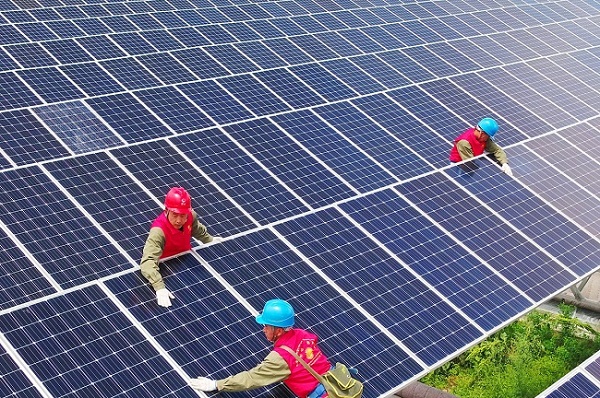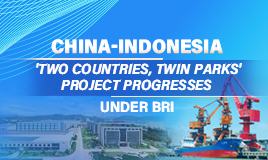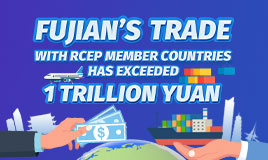Fujian, Tibet blaze green finance trail

State Grid employees check solar power panels in the Tibet autonomous region. [Photo by Song Weixing/For China Daily]
Innovative, novel financial products and service centers make credit easier
In China's Fujian province and the Tibet autonomous region, finance for sustainable, environmentally friendly projects is taking the form of innovative or novel financial products amid the country's transition to a greener economy, regulatory officials said.
"We guided banking and insurance institutions in their exploration with the establishment of green financial service centers specializing in eight areas, including green consumption, green manufacturing and green transportation. A total of 53 such centers have been set up so far in Sanming, Fujian province," said Cong Lin, director of the China Banking and Insurance Regulatory Commission's Fujian Office, at a news conference on May 27.
To promote green transformation and upgrade of the manufacturing sector, the Fujian-based Industrial Bank Co Ltd's Sanming branch established a financial services center specializing in serving green manufacturing and launched a suite of products, providing 1.5 billion yuan ($235 million) in green finance to 31 manufacturing companies.
Fujian Sangang (Group) Co Ltd, the largest iron and steel company in Fujian, promoted its green transformation and upgrade, with the help of green financial services such as carbon emissions rights trust, technical innovation loans and pollutant discharge rights pledge loans.
To advocate the concept of sustainable living, Rural Commercial Bank of Sanming in Fujian set up a financial services center specializing in serving green consumption and launched an online unsecured loan product called "low-carbon loans".
"Utilizing data provided by external platforms, the loan product will take the volume of personal carbon emissions reduction as a key reference in accounting for credit and lending rates. One gram of carbon emissions reduction can be converted to a reward point for living a low-carbon life. The higher the reward points, the lower the lending rates," Cong said.
Since the low-carbon loan product was launched in February, the rural bank has extended 15.74 million yuan in credit to 116 borrowers.
The CBIRC's Fujian Office highlighted the exploration of carbon trading financial business and pushed for Industrial Bank to conduct a pilot program of China's first agreed repurchase financing project in Nanping, Fujian province, which takes forward carbon trading products as targets.
The project took forest carbon sinks as pledges and adopted a portfolio financing model that combines pledges with agreed repurchase, to turn future ecological benefits of forestry carbon sequestration into economic benefits, Cong said.
By the end of the first quarter, the outstanding balance of green finance in Fujian reached 265 billion yuan, up 7.2 percent from the beginning of this year.
China will draw up an action plan for carbon emissions to peak by 2030. Its industrial structure and energy mix will be improved. While promoting the clean and efficient use of coal, the country will make a major push to develop new energy sources, said the Government Work Report delivered by Premier Li Keqiang at the opening of the fourth session of the 13th National People's Congress on March 5.
The CBIRC's office in Tibet created a list of key clean energy projects and relevant companies, which enjoy more favorable lending rates. It gave full support to major clean energy projects such as hydropower and solar power development in the upper reaches of the Lancang River, said Xiang Heng, director of the office.
In addition, the banking and insurance regulator in Tibet is also striving to help build a demonstration zone for clean and renewable energy that keeps hydropower as the mainstay while integrating different types of new energy, including solar, wind and geothermal power, Xiang said.
The outstanding balance of financing for renewable and clean energy projects was 61.6 billion yuan at the end of the first quarter, accounting for 79 percent of the balance of green finance in the region.




